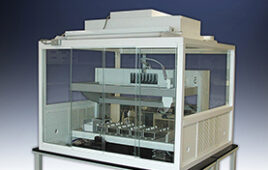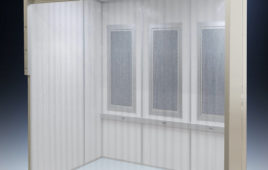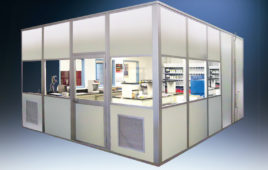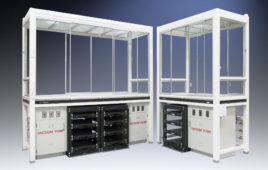Moisture occurs in nearly all substances. In our last column, we discussed ways in which inappropriate moisture levels can negatively affect the properties of the host material (e.g. the substrate) as well as impact cost and product quality. There are many techniques for the measurement of moisture. Because these have largely grown up in discrete industries, there is a good deal of confusion and ambiguity concerning techniques and measurement units, calibration problems, and moisture interaction with host materials.
Techniques and Measurement Units
Depending upon the technique, different units are used to measure and define the moisture level. These techniques can be broken down into three major areas:
Standard gravimetric methods employ a known weight sample which is heated to drive off the free water by evaporation after which the remaining dry weight is measured. The difference in the sample weight before and after heating is a measure of the moisture content. Weight is the unit of measure and moisture content is specified as percentage of the bulk weight.
Electrical impedance techniques make use of the huge difference in the dielectric constant of water compared to most common host materials. By applying an electrical potential to the sample, measurements of the current flow, resistance to flow, or the charge capable of being put in to the field of view, a reading of the relative conductance can be made and the moisture level gauged. This technique uses electrical measure as units to define the level of moisture.
Spectroscopic methods generally use the near infrared part of the spectrum, more exactly one of the three vibration energy levels of the hydrogen/oxygen bands. For measurement of moisture in solids a surface reflectance technique is used. The substrate, in the absence of water, has a characteristic spectroscopic fingerprint. With careful calibration, changes in the spectroscopic fingerprint when water is present can be used to indicate moisture level. This technique can be used either in gases and transparent solids, or, by surface reflection, for non-transparent solids. As with gravimetric methods, this technique expresses the moisture content as a ratio.
Calibration
Calibration is a recurring problem in moisture measurement. Until it is resolved, fragmentation and misunderstandings will persist, especially since it is very difficult to develop and maintain a primary reference standard for bulk moisture content, nor are there any guidelines for units of measurement. The instrument user for each and every product for which measurement is required necessarily carries out calibrations and comparisons. This normally involves extracting samples from the process, recording the reading on the instrument, then oven drying the sample to constant mass.
The error involved in this approach can be large, though the accuracy and precision of the measurement techniques are so variable that this “noise” is often masked. However this remains the principal practical method of calibration due to lack of any primary, secondary or tertiary reference standard. There is also the problem of checking the instrument for drift or variation and, if either of these occurs, knowing what exactly needs to be done to remedy the situation. This becomes of paramount importance when looking at on-line moisture determination. For on-line techniques to have practical value in a production situation, re-calibration must be easily performed by the user without complicated reference to third parties for traceable reference standards.
Moisture Interaction with Host Materials
Water may be physically or chemically bound to the host material.
Physically bound. This is the state most associated with water in which it sits with the host material throughout its volume, whether absorbed or adsorbed. Apart from solids, it also covers the liquids that form creams, oils, emulsions and colloids, or in some liquids as solutions such as methanol and ethanol.
Chemically bound. This is where the water forms part of the crystal lattice or it hydrogen bonds to another charged species. Also included in this state would be ice, where water hydrogen bonds to itself. Techniques, calibration and moisture interaction with the host material can contribute to ambiguity in moisture measurement.
Next month: A continued discussion of the most common techniques for moisture measurement.




